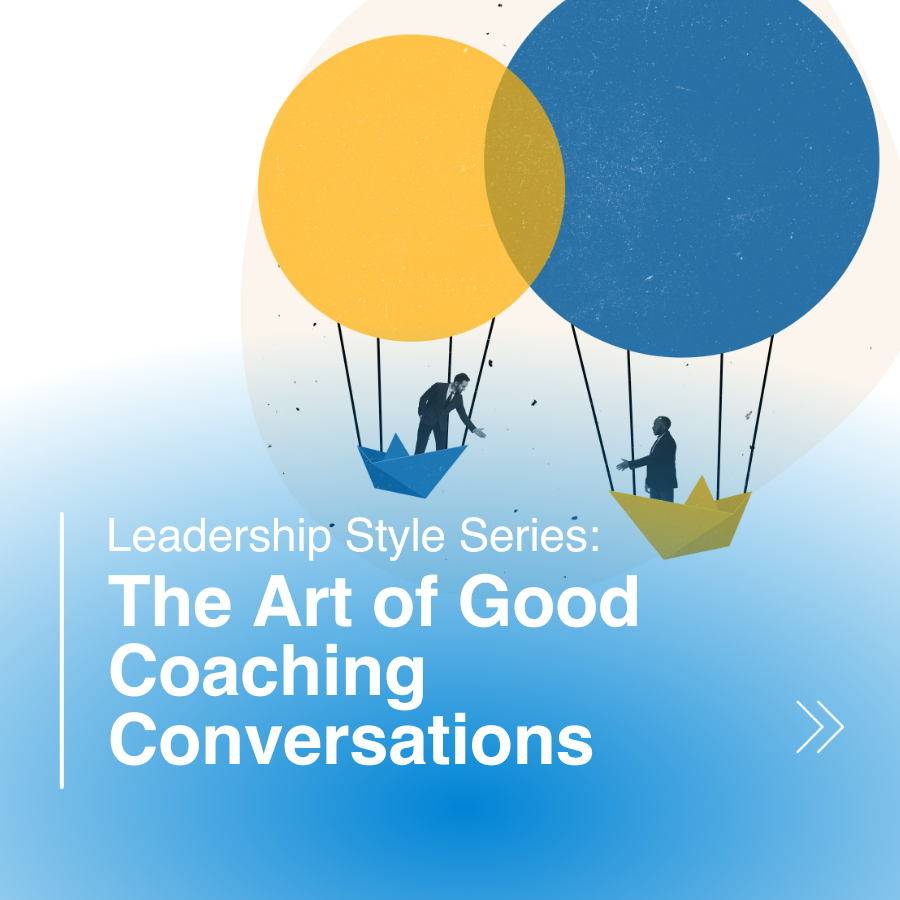Published by Skills for Justice
The Art of Good Coaching Conversations
Date 11.03.24

This is the fifth article in the six part Leadership Styles series. See the first article in the series here.
Professor David Clutterbuck, author of Building & Sustaining a Coaching Culture, draws on his experience of working in the justice sector, and alludes to the fear that many senior leaders hold when it comes to having real conversations with those whom they lead.
Fear of saying the wrong things. Fear of not having the right language. Lack of skill and ability to provide developmental feedback. For some leaders, Professor Clutterbuck observes that a command-and-control style of leadership is often the only leadership style that they have ever mastered.
Peter Hawkins believes that “when leaders understand the strengths and interests of their teams and believe in their future potential, they instil a mindset of possibility that creates a work culture in which everyone is striving to do their best” (Peter Hawkins: Creating a Coaching Culture: Developing a coaching strategy for your organisation).
As leaders, when we ask questions that can’t be answered by yes or no, we create opportunities for a more productive conversation. Our everyday conversations, however long they last, can be shaped by a coaching mindset and techniques. These everyday conversations can take place anywhere, in the corridors, in the patrol car, over a coffee.
If leaders in the justice sector were to adopt and develop this mindset, what would we observe them doing? The Centre for Collective Leadership has identified four pillars of skilful conversations, in their article ‘Truth and Courage: Implementing a Coaching Culture with different conversations every day.’
Listening to understand
Listening to understand is a critical skill for all leaders wherever you are in the organisation. Instead of proliferating our assumed superior intellect, work with the idea of a ‘learners mindset,’ staying open and curious to different perspectives, to what is said, and what is not said, listening to hear and to empathise, not just to respond, or to respond with the ‘right’ answer. As Caspar Craven aptly observes; “it doesn’t matter who is right, it only matters what is right.”
Asking powerful questions
The use of powerful questions has the ability to to activate new neural pathways and elevate our capacity for more expansive thinking. The good news, as advocated by Dr Carol Dweck from her research into fixed and growth mindsets, is that the brain can be calibrated towards a growth mindset, and that it is possible to teach individuals to think in a different way.
Challenging and supporting with feedback
Feedback, given with compassion and the right balance of support and challenge to stretch people’s thinking, can create a safe environment for the recipients of feedback to engage with it in a non-threatening way. Armed with good questions to enlighten and generate deeper reflection, the leader can create safe spaces where feedback can be received well, and learning can take place.
Establishing next steps and accountability
Feedback, given with compassion and the right balance of support and challenge to stretch people’s thinking, can create a safe environment for the recipients of feedback to engage with it in a non-threatening way. Armed with good questions to enlighten and generate deeper reflection, the leader can create safe spaces where feedback can be received well, and learning can take place.
So, how do leaders create the conditions for a coaching culture to grow and flourish? In the next and final article in this series, I look at 10 steps you can take to create a coaching culture in your organisation.
The views expressed in this article have been informed by conversations with individuals in the justice sector but otherwise represent the views of Skills for Justice (part of The Workforce Development Trust) based on our experience of working in the sector and our research into coaching cultures.
As experts in the fields of coaching and culture transformation, our LMOD team have a wealth of experience in guiding organisations towards a coaching culture, and a faculty of associate coaches to draw from.

Download the full eBook
This article is the fifth article in our six-part Leadership Styles series. Access the full series in our downloadable eBook.
"*" indicates required fields




